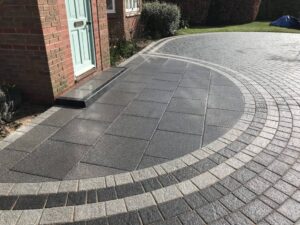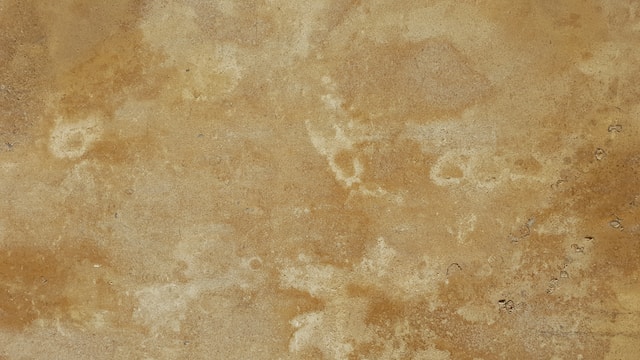Paving Companies Charleston SC is a complex task that requires specialized skills and heavy equipment to complete properly. Many homeowners choose to hire local driveway paving pros for the work.
Asphalt is relatively inexpensive and easy to repair or resurface when needed. It can also hold up well in extreme temperatures. Proper driveway grading will also help keep water away from your home’s foundation.

Paving a driveway is an investment for homeowners, and it’s a project that requires heavy equipment like jackhammers and excavators. Those with the experience and access to this type of machinery can save money by tackling this job themselves.
However, there are some important things to consider before taking on this task yourself. First, you’ll need to survey your property and ensure there are no underground utility lines in the area where you plan on paving. It’s always best to call 8-1-1 or have a professional come out and flag or mark the location of any pipes or lines you may run into during demolition or excavation.
Next, you’ll need to prepare the surface where you plan on laying down your new paved surface. This will involve removing debris or materials like gravel, bricks, or pavers. You’ll also need to remove any plants and ensure your home and garage are protected from damage during demolition. You’ll also need to remove the old concrete from the old driveway once it’s been broken up and removed.
Lastly, you’ll want to ensure that your contractor uses high-quality materials. This will help you avoid any problems resulting from poor artistry or subpar materials. If you have any doubts, ask your contractor to provide photos of their previous paving projects to see the quality of their work.
Whether you’re looking to re-pave an existing or brand-new driveway, installing the proper pavement can make all the difference in your driveway’s functionality and appearance. It’s essential to research the best contractors in your area and ensure you get the highest-quality materials, labor, and service to get a long-lasting, beautiful, and durable driveway.
Whether replacing an existing driveway or starting from scratch, a good quality sub-base is crucial. It may not seem obvious why a layer of unbound material is needed beneath paving materials like block paving or gravel. Still, it significantly impacts the longevity and performance of your driveway.
The primary function of a sub-base is to distribute the weight of the surface across a larger area and reduce stress points. This allows the paving to withstand much more load than it would otherwise be able to, without damage or distortion. It also avoids settlement and channelization, which occur with cheaper paving that doesn’t use a sub-base.
Depending on the soil type, a sub-base can be as simple as compacting a layer of existing material, or it might need to be created from scratch. A geotextile is often used to prevent wet earth from infiltrating the sub-base layer, and drainage is important, too.
Some options are available for a sub-base, but the most common is hardcore, essentially a thick layer of broken bricks, concrete, or stone. A less popular option is sand blinding, a fine layer of sand that can be used with hardcore or as a replacement for part of it. Finally, there is MOT Type 1, a crushed limestone or granite material that contains no fines and can be used alone or in conjunction with other sub-base layers. The most important thing is that the sub-base layer is ‘tight,’ meaning it has no voids or holes. Once this is achieved, the final construction of the paving can begin.
Once the sub-base is installed and any soft areas are undercut and repaired, it’s time for the binder layer. This step is critical for a long-lasting asphalt driveway. The binder is a mixture of asphalt and stone aggregate that adds strength, durability, resistance to freeze-thaw cycles, and other environmental factors that can damage a driveway’s surface.
After laying the binder layer, it’s compacted with a heavy roller. This process is known as a proof roll, ensuring that the underlying surface is strong enough to support the top layer of asphalt. The proof roll also checks for soft spots that need further attention.
Next, the contractors lay the top course of asphalt. The wear or surface asphalt layer’s full course features a smaller aggregate than the binder course. This makes it look smoother and more appealing to the eye, and it sheds water better than the binder course.
The final asphalt layer is a blacktop surface, commonly called a pavement or macadam surface. Most people think of the drivable surface when they picture a driveway. Depending on your style and needs, you can dress up the edges of your driveway with granite cobblestones for an elegant finish. Or, you can go with a gravel surface for a more rustic feel that’s great for pedestrian traffic. Just make arrangements with your local utility companies ahead of time. Call 8-1-1 to have an expert check for underground lines before demolition or digging. This prevents expensive and dangerous complications with your utility lines. And remember to leave room for a smooth transition between the old and new surfaces.
During this phase, the paving contractor adds soil to achieve the proper thickness and compaction, then installs a layer of sub-base, which provides stability for the new asphalt surface and acts as a frost barrier to reduce damage from freeze-and-thaw cycles. Without a properly installed sub-base, the asphalt surface will have drainage problems and be more vulnerable to cracking, heaving, and other damage.
Next, a binder layer is added to the sub-base to help bind the aggregate stone together with the bitumen. This creates the smooth jet-black finish that people associate with asphalt pavement. The binder layer is rolled with heavy rollers to ensure that it is well-bonded and that no bumps of aggregate protrude from the surface.
Most driveway paving projects involve demolition and digging, so knowing where utility lines are located is important before beginning. You can do this by calling 8-1-1 or having a professional survey your property for underground lines and flag them accordingly.
The final surface asphalt layer is applied once the sub-base and binder are cured. This gives your driveway a finished, sleek appearance, making it look much better than a dirt or gravel driveway. A new asphalt surface also provides a smoother ride for vehicles and helps to protect the surface of your home or garage floor.
Depending on your budget, you may install a new asphalt driveway or resurface your existing one. Resurfacing a driveway is more cost-effective than replacing it, and it can still provide the same long-term durability as a new installation. However, removal and replacement are often needed to address severe structural or drainage issues.
Surface asphalt comprises small aggregate, sand, and oil, creating a jet-black surface that provides a comfortable and safe ride for drivers and pedestrians. It is not uncommon for new asphalt to connect with old pavement – whether existing roads, parking lots, or driveways – and contractors need to install butt joints to ensure a smooth transition between the two surfaces. It is also important to grade and compact the butt joints properly so that water runs off the new surface and doesn’t pool in the area.
The best way to get good joint density is to use a dense-graded mix and to avoid physical and thermal segregation. Physical segregation is caused by the paving machine’s hiccups in the receiving hopper and augers, poor truck loading and unloading, or improper paving machine operation (running the hopper and augers low). Thermal segregation occurs in colder areas of the mat where the material has a lower temperature than the rest of the paved surface. This results in localized areas of lower density, higher air voids, and the risk of permeability.
To prevent these problems, it is recommended that the paving contractor maintains a constant head of material at the drill and extends the tunnel and confined area out to 12″ or 18″ from the end gate when paving wider spaces. This will ensure that the same amount of mix reaches the edge of the paving area when closing a butt or notched wedge joint. The contractor should also pre-roll the first pass to achieve the required lift thickness, rake and scalp the edge of the mat, and apply a tack coat to the face of the joint area.


